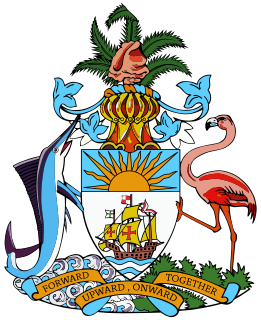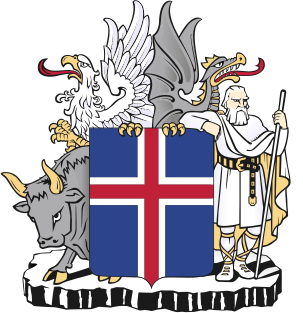Constitution
According to the previous constitution of 1915, with changes from 1920, in order for a new constitution to pass, it must first be passed in one Rigsdag, which must then be disbanded, a new parliamentary election called, and the new parliament must then also pass the constitution, in unchanged form; and finally, a majority of voters in a referendum, with a requirement of at least 45% turnout, must also pass the proposed constitution. [6] When the referendum took place on May 28, 1953, it concluded the last of these three steps, and the constitution could take effect on June 5.

An election is a formal group decision-making process by which a population chooses an individual to hold public office. Elections have been the usual mechanism by which modern representative democracy has operated since the 17th century. Elections may fill offices in the legislature, sometimes in the executive and judiciary, and for regional and local government. This process is also used in many other private and business organizations, from clubs to voluntary associations and corporations.
Changes from the previous constitution
The Ministry of Education of Denmark lists the changes from the previous constitution as follows: [7]
- The Act of Succession was changed so that females could also inherit the Danish throne, though still preferring even younger brothers. As the reigning King Frederick IX had three daughters and no sons, this meant that Princess Margrethe became the Heir Presumptive instead of her uncle Prince Knud. As Frederick IX's wife Queen Ingrid was not expected to (and in fact did not) have any more children, this effectively ensured that Princess Margrethe would become Queen of Denmark, which she did.
- Parliamentarism, in the sense that no government may have a majority of members of parliament against it, is made explicit in the constitution. (This principle had de facto existed since 1901, but the 1953 constitution made it law).
- The Landsting was abolished, and the Folketing expanded to 179 members.
- Voting by convicts and the poor is no longer outlawed in the constitution, but subject to normal laws.
- The electoral age was removed, to be decided by referendums.
- Greenland was made a coequal part of Denmark, and would elect two members of parliament.
- Referendums can be held over most kinds of laws, provided that one third of parliament demand it (this has only happened once).
- Citizens' civil rights are increased.
- The office of Folketing's ombudsman is established.
- Sovereignty can be forfeited to what the constitution calls mellemfolkelige myndigheder, which can include Supranational unions such as the current European Union. For this to take place, it must either happen with 5/6 of members of parliament voting in favour, or by holding a referendum.
The Danish Act of Succession of 27 March 1953 was accepted after a 1953 referendum in Denmark and dictates the rules governing the line of succession to the Danish throne. The 1953 referendum changed the act so that it became possible for a woman to inherit the throne in the event that she has no older or younger brothers, a system known as male-preference cognatic preference primogeniture. As the reigning King Frederick IX had three daughters and no sons, this meant that Princess Margrethe became the heir presumptive instead of her uncle Prince Knud. As Frederick IX's wife Ingrid of Sweden was not expected to have any more children, this effectively ensured that Princess Margrethe would become Queen of Denmark, which she did.

Frederick IX was King of Denmark from 1947 to 1972.

Margrethe II is the Queen of Denmark, as well as the supreme authority of the Church of Denmark and Commander-in-Chief of the Danish Defence. Born into the House of Glücksburg, a royal house with origins in Northern Germany, she was the eldest child of Frederick IX of Denmark and Ingrid of Sweden. She succeeded her father upon his death on 14 January 1972, having become heir presumptive to her father in 1953, when a constitutional amendment allowed women to inherit the throne. On her accession, Margrethe became the first female monarch of Denmark since Margrethe I, ruler of the Scandinavian kingdoms in 1375–1412 during the Kalmar Union. In 1967, she married Henri de Laborde de Monpezat, with whom she has two sons: Crown Prince Frederik and Prince Joachim. She has been on the Danish throne for 47 years, becoming the second-longest-reigning Danish monarch after her ancestor Christian IV.

The Folketing, also known as the Danish Parliament in English, is the unicameral national parliament (legislature) of Denmark. Established in 1849, until 1953 the Folketing was the lower house of a bicameral parliament, called the Rigsdag; the upper house was Landstinget. It meets in Christiansborg Palace, on the islet of Slotsholmen in central Copenhagen.
There are three types of elections in Denmark: elections to the national parliament, local elections and elections to the European Parliament. Referendums may also be called to consult the Danish citizenry directly on an issue of national concern.

Elections in the Bahamas take place in the framework of a parliamentary democracy. Since independence voter turnout has been generally high in national elections, with a low of 87.9% in 1987 and a high of 98.5% in 1997. The current Prime Minister is the Hon Hubert Minnis.
The Constitutional Act of the Kingdom of Denmark, or simply the Constitution, is the constitution of the Kingdom of Denmark, applying equally in Denmark proper, Greenland and the Faroe Islands. In its present form, the Constitutional Act is from 1953, but the principal features of the Act go back to 1849, making it one of the oldest constitutions.

Folketing elections were held in Denmark on 22 April 1918, the first in which women could vote. The result was a victory for Venstre, which won 45 of the 180 seats in the Folketing, which had been expanded from 114 to 140 seats. Voter turnout was 75.5%.

Folketing elections were held in Denmark on 3 April 1939, except in the Faroe Islands where they were held on 19 April. They followed a dissolution of both chambers in order to call a referendum on changing the constitution. The referendum was held on 23 May but failed due to a low voter turnout. The result of the elections was a victory for the Social Democratic Party, which won 64 of the 149 seats. Voter turnout was 79.2% in Denmark proper and 47.8% in the Faroes.

Folketing elections were held in Denmark on 28 October 1947, except in the Faroe Islands where they were held on 18 February 1948. The Social Democratic Party remained the largest in the Folketing, with 57 of the 150 seats. Voter turnout was 85.8% in Denmark proper and 60.1% in the Faroes.
A referendum on lowering the voting age from 20 to 18 was held in Denmark on 19 September 1978. It was held after the Danish government lowering the age of majority from 20 to 18 in 1976. The change was approved by 53.8% of voters with a turnout of 63.2%. The electoral age had previously been lowered from 21 to 20 in a 1971 referendum, after a 1969 referendum had rejected lowering the electoral age to 18.
A referendum on joining the European Economic Community was held in Denmark on 2 October 1972. The result was 63.3% in favour with a turnout of 90.1%. The law that Denmark should be member of the EEC was passed on 11 October 1972, and Denmark became a member on 1 January 1973.
A referendum on lowering the voting age from 21 to 20 was held in Denmark on 21 September 1971. The change was approved by 56.5% of voters, with a turnout of 86.2%. A previous referendum had been unsuccessful in lowering the electoral age to 18 years, which was introduced after a 1978 referendum and which still stands.
A referendum on lowering the voting age from 21 to 18 was held in Denmark on 24 June 1969. The proposed change was rejected by 78.6% of voters with a turnout of 63.6%. Two years later, the electoral age was instead lowered to 20 years, and finally, after a 1978 referendum, to 18 years.
A referendum on land laws was held in Denmark on 25 June 1963. The four land laws, which had already been passed by the Danish parliament, were rejected by voters. It was the first, and so far only, time in Danish history that a law passed by parliament had been sent to a public referendum by a minority in parliament.
A referendum on reducing the voting age from 23 to 21 was held in Denmark on 30 May 1961. It was approved by 55% of voters with a 37.3% turnout.
A constitutional referendum was held in Denmark on 23 May 1939. Voters were asked whether they approved of a new constitution. Although it was approved by 91.9% of those who voted, a turnout of only 48.9% meant that the percentage of eligible voters approving it was only 44.46%, below the 45% required by the existing constitution of 1915.
A referendum on changing the Danish Act of Succession, the rules governing the succession to the Danish throne, was held in Denmark, the Faroe Islands, and Greenland on 7 June 2009, simultaneously with the election to the European Parliament, in Denmark proper.

The politics of Denmark take place within the framework of a parliamentary representative democracy, a constitutional monarchy and a decentralised unitary state in which the monarch of Denmark, Queen Margrethe II, is head of state. Denmark is described as a nation state. Danish politics and governance are characterized by a common striving for broad consensus on important issues, within both the political community and society as a whole.

A referendum on the electoral law was held in Italy on 18 April 1999. Voters were asked whether they approved of replacing the mixed-member proportional representation electoral system with one based solely on single-member constituencies, with the 25% of seats instead allocated to the second-placed in the constituencies with the most votes. The proposal was supported by larger parties, but opposed by smaller ones. Although the proposal was approved by 91.5% of voters, turnout was only 49.6%, resulting in the referendum being invalidated as the threshold of 50% was not passed.

A referendum on the electoral law was held in San Marino on 3 July 2005. Voters were asked four questions on changes to the electoral law and electoral system. Although all four were approved by a majority of those voting, voter turnout was just 21.7%, meaning that the quorum of 32% of registered voters (10,143) was not achieved for any question. This resulted in all four questions failing, including two that proposed raising the quorum to 40%.

Parliamentary elections were held in Iceland on 10 September 1908, alongside a referendum on prohibition.













